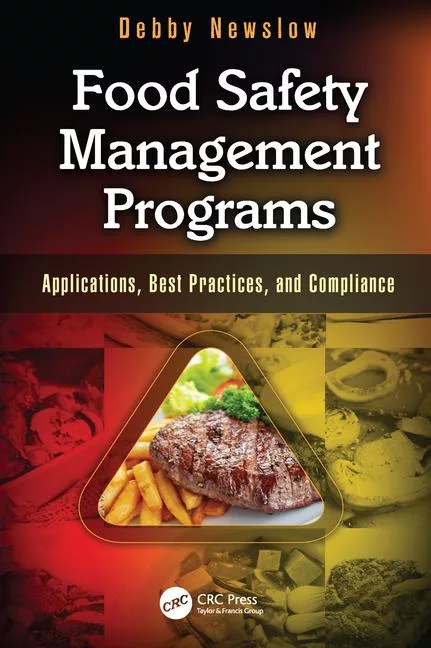Economically Motivated Adulteration: What Are Processors Doing to Combat Food Fraud?

This is the second article in our series on food adulteration. Part one in August/September 2019 focused on what we learned from processors about what they are doing to combat intentional adulteration (adulteration intended to cause widespread harm). In this article, we will focus on economically motivated adulteration (EMA)—adulteration of food products with the intent to illegally make money—otherwise known as food fraud.
The issue of food fraud should not be unknown to anyone who reads Food Safety Magazine. As an example, in July 2019, Food Safety Magazine reported that the Canadian Food Inspection Agency (CFIA) stopped the import of over 28,000 pounds of adulterated honey due to the addition of sugars to illegally expand the volume of the products. Even earlier in 2019, Food Safety Magazine reported on the fines and potential jail time meted out by Dutch courts related to the 2013 horse meat scandal. Food fraud is not a new issue.
Food fraud can be committed in many ways, including mislabeling, product substitutions, or product adulterations (e.g., adding a dye to change the appearance of a product or adding a cheaper ingredient to lower the cost of a product, increase its volume, or both). There are no shortages of reports of this type of fraud, such as the CFIA report about adulterated honey, horse meat being sold as or added to beef, milk being diluted with water, and others. Lower-quality vegetable oil is often misrepresented as or added to olive oil and then sold as extra virgin olive oil (EVOO)—a premium product. I have been told by an expert in olive oil that there are several times more volume of EVOO on the world market every year than there are olives grown to produce it.
It may be tempting to think that because our food supply chain is so large and complex that some of these incidents occur simply through errors. If this were the case, however, and these incidents occurred through random errors, an equal number of cases would involve a more expensive ingredient substituted for a lower-quality one—and yet this rarely happens.
So, we wanted to find out how food processors are dealing with intentional food fraud, how severe of a problem it is for them, and what steps they’re taking to detect and prevent it.
We received responses to these questions from more than 270 processors in the U.S. and Canada, and another 80 processors around the world across multiple types of foods and processor types.
Is EMA a Significant Issue for Processors?
We first asked if they considered EMA to be a significant issue in their markets. Interestingly, the results between the processors in the U.S. and Canada versus those in the rest of the world were nearly a mirror image (Figure 1), with roughly two out of three processors in the U.S. and Canada saying it is not a significant issue, but two of three in other countries saying it is. We also looked at the responses by food type, and these were relatively consistent (Figure 2) across the different types of processors, with responses generally around a 60:40 ratio of “not significant” versus “significant.” Respondents in the grains and milled products category reported a somewhat higher ratio of “not significant” at 76 percent.


Processors in spices reported a different response: “Significant” outnumbered “not significant” 56 percent to 44 percent. In their comments, several of these individuals made the point that their market has had a history with EMA with many cases of substitutions and alterations. It is known, for example, that oregano has been found to contain other vegetative matter (i.e., leaves of other plants) as an adulterant, synthetic flavors are often passed off as natural (e.g., synthetic vanilla sold as natural) or used to expand the volumes of natural flavors, and various colorants have been used to misrepresent the quality of spice products—such as Sudan dye illegally used in paprika—to name a few. These processors also made the point that their supply chain is generally far more global and involves more products than what most other processors routinely deal with. This complexity provides many more “touch points” that are very difficult to track, providing ample opportunities for someone to tamper with a product.
Have Processors Experienced Food Fraud Firsthand?
We also asked about the respondents’ direct experiences with food fraud, not just those reported in their industry, by asking, “Have you detected food fraud in your supply chain?” Eighty-five percent (Figure 3) reported “no”; neither they nor their companies had directly detected food fraud. However, nearly 40 percent of those in the spices category did report firsthand experience with adulterated products.

We also wanted to understand what processors were doing to prevent or detect food fraud, and asked, “Do you use analytical testing to detect food fraud?” Most (71%) (Figure 4) reported that they do not. So, what is it that processors are doing?

For those reporting that they are not testing, the most common answer was to rely on known and trusted suppliers and make sure that they have Certificates of Analysis from each of their suppliers. For some of these companies, this is more than an “arm’s-length” transaction, with many reporting working only with (as one processor stated) “…farmers and fishermen that we know, trust, and have worked with for a number of years.” Others reported relying on certifications, inspections, and supplier approval programs as their main methods of control.
For those reporting that they are testing, most reported conducting specific tests unique to their products, including tests for added water in milk and specific pesticide/chemical residues on fruit/vegetables represented as organic; Fourier-transform infrared spectroscopy in beverages, supplements, grains, and other products; and PCR in meats and fish. And, as expected, those working in spices had a different experience to report. With these companies reporting more experience with food fraud than the other sectors, and with the nature of their product not being a single product but a class of many different products, these processors reported doing more testing and using more testing methodologies than the other segments, and these included gas chromatography, high-pressure liquid chromatography, wet chemistry, infrared spectroscopy, and analyses for many types of indicator parameters, including color, odor, specific gravity, and, in one instance, gluten. One processor also reported using carbon-14 analysis to verify products as natural.
We also should add that several of the companies that are not currently testing did report that they are looking into acquiring equipment to start testing. Others reported that while they understand that testing would be a good addition to their program and would help them be more vigilant in their prevention efforts, they admitted that as small companies, they couldn’t afford the equipment they would need for testing and so would need to continue to rely on inspections and supplier control.
Some of the smaller companies with smaller supply chains also admitted that they felt somewhat insulated from EMA due to their small size and scale. Many assumed that they were too small to be targets and that criminals were more likely to focus on larger, more profitable targets.
Conclusions
As mentioned earlier, food fraud is not new, and it is not going to be eliminated anytime soon. As supply chains get longer, more global, and more complex, there will be ever more opportunities for food fraud to occur, and food companies will have to be ever more vigilant. Many believe that what they are doing may be adequate, but they most likely also know that it is not foolproof. Companies will continue to look for ways to improve their programs but in a manner that balances the investments they make with the relative risk that they see in their particular processing sector.
Bob Ferguson is president of Strategic Consulting Inc. and can be reached at insights@food-safety.com or on Twitter at @SCI_Ferguson.
Looking for quick answers on food safety topics?
Try Ask FSM, our new smart AI search tool.
Ask FSM →









